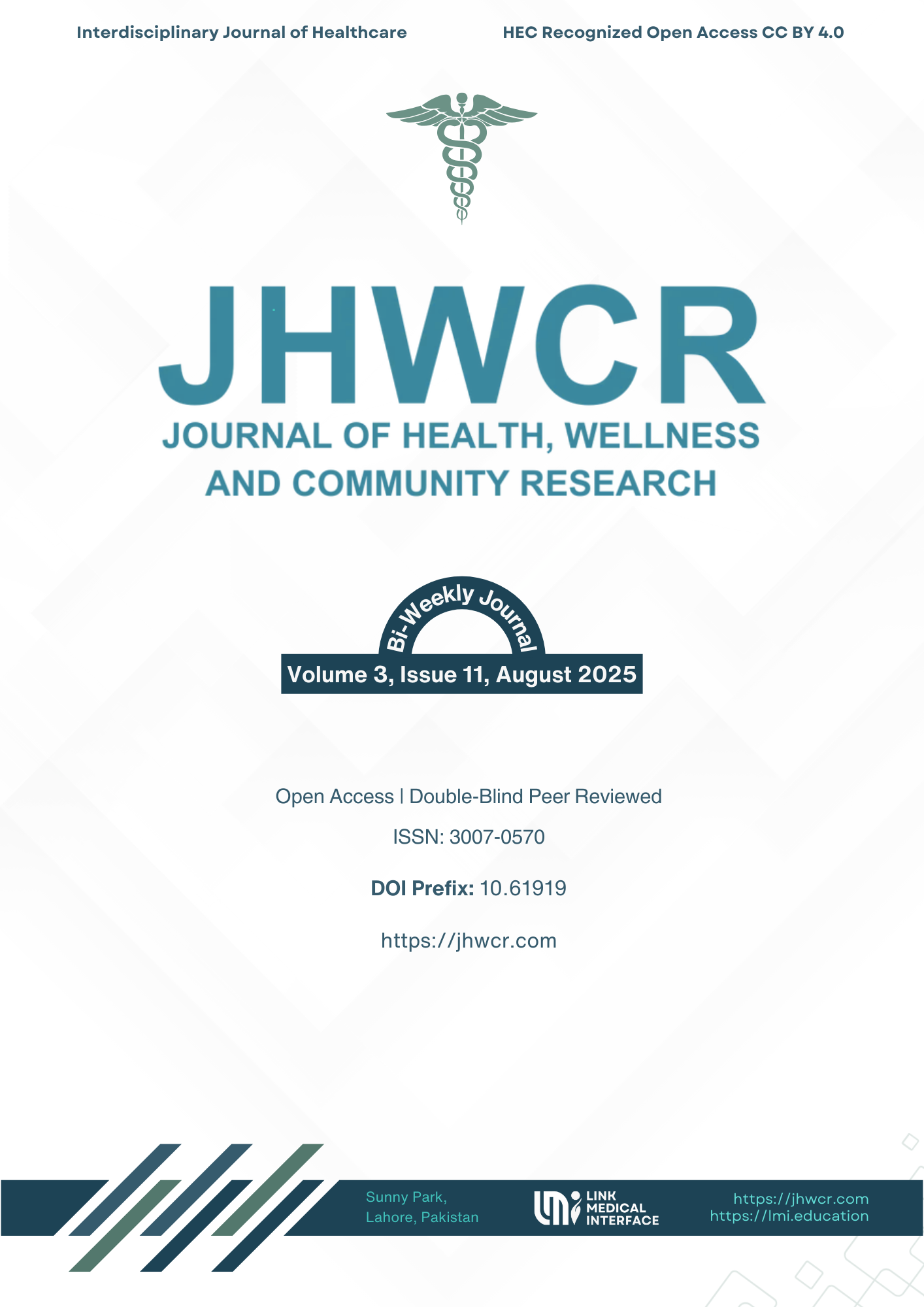Prevalence of Urinary Incontinence Among Athletes: A Gender-Based Insight
DOI:
https://doi.org/10.61919/06pjn902Keywords:
urinary incontinence, athletes, gender differences, prevalence, pelvic floor, basketball, running, tennisAbstract
Background: Urinary incontinence (UI), defined as the involuntary leakage of urine, is a common but underreported condition that negatively impacts quality of life and athletic performance. Although extensively studied in older adults and postpartum women, limited evidence addresses its prevalence among athletes, particularly within South Asian populations. Gender differences and sport-specific risks remain inadequately characterized. Objective: To determine the prevalence and severity of urinary incontinence among male and female athletes, and to evaluate associations with type of sport. Methods: A cross-sectional observational study was conducted over four months in Faisalabad, Pakistan. A purposive sample of 216 athletes (108 males, 108 females), aged 18–30 years and engaged in basketball, tennis, or running, was recruited. Data were collected using the validated International Consultation on Incontinence Questionnaire–Urinary Incontinence Short Form (ICIQ-UI-SF). Prevalence, severity, and associations with gender and sport type were analyzed using chi-square tests and multivariate logistic regression. Results: Overall, 92.1% of athletes reported urinary incontinence. Females demonstrated a higher risk of severe symptoms (20.4% vs 6.5% in males, OR 3.67, 95% CI 1.47–9.15). Basketball players had the highest prevalence (73.6% moderate, 18.1% severe), followed by runners, while tennis players exhibited the lowest overall burden. Gender and sport type were independent predictors of incontinence. Conclusion: Urinary incontinence is highly prevalent among athletes, with females and participants in high-impact sports disproportionately affected. Screening, awareness, and preventive interventions such as pelvic floor training should be integrated into sports medicine practice.
Downloads
Published
Issue
Section
License
Copyright (c) 2025 Laraib Amna, Laiba Sikandar, Kinza, Lieza Iftikhar (Author)

This work is licensed under a Creative Commons Attribution 4.0 International License.


